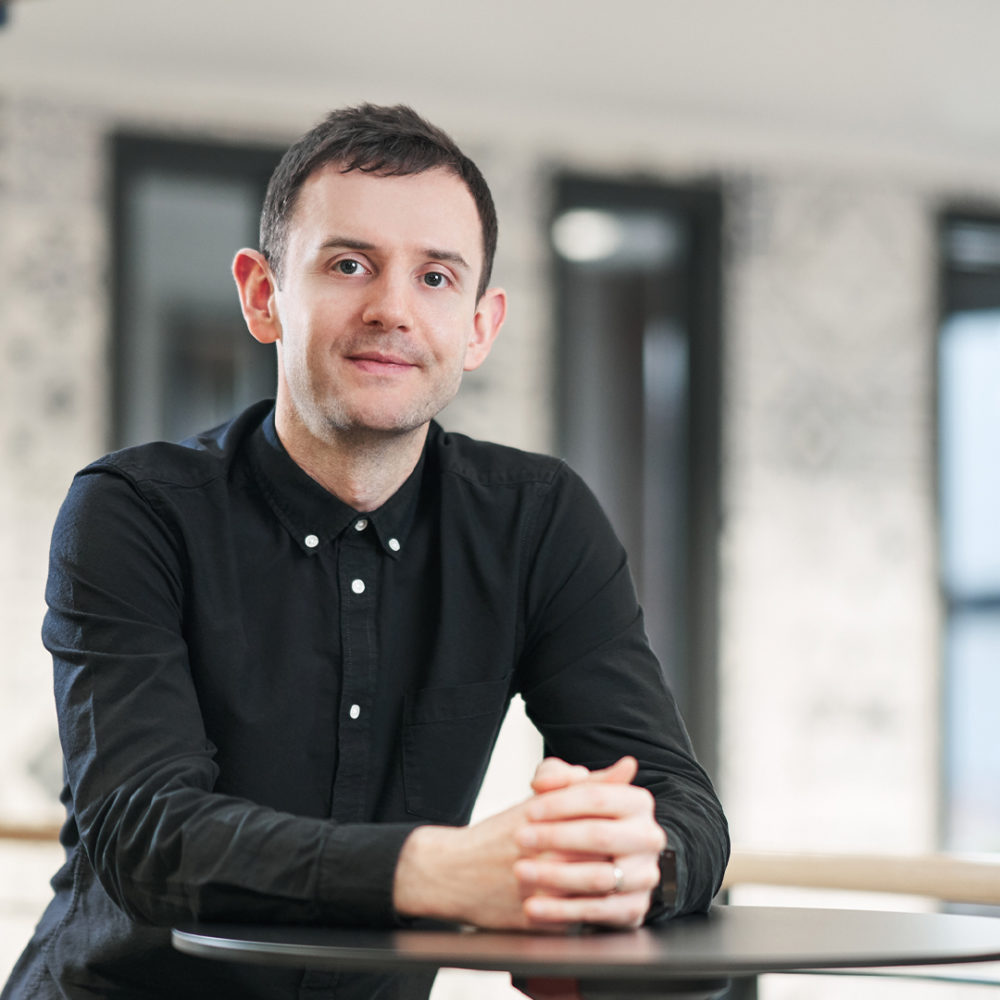
In the latest edition of our regular feature at Onyx Health, our Content Writer Andrew Hair sat down with Senior Graphic Designer James Machin to discuss the power of effective branding in healthcare and pharmaceuticals.
Growing up in the picturesque Scottish borders I quickly found that I had a flair for art and design. I became interested in marketing and the psychology behind how brands create appeal to sell their products. I was drawn to Graphic Design, which combines art and communication and made the journey south to study Graphic Design at Northumbria University. I have made Geordie land my adopted home ever since, now living with my wife Helen and daughter Rosie in County Durham.
I worked for several North East creative agencies across a wide range of clients and sectors before arriving at Onyx Health in 2018 as the strategic lead for design and branding. I was inspired by the challenge of working in the pharmaceutical and healthcare sectors and delivering work that has a real-world impact.
That it is just about a logo when it’s so much more than that. Having an effective brand is about strategic positioning of a business to ensure its audience relates and reacts the way you want them to. This includes the look and feel of communications in design, imagery and media, the tone of messages both written and spoken. Ensuring this is consistently delivered across a range of media platforms, whilst always keeping focus on the target audience is vital.
Getting this right is essential to building brand trust and identification and this is particularly important in a healthcare setting, where trust is critical, and scrutiny is high, due to the tightly regulated nature of the sector.
The rise of social media and digital technology has changed the way we communicate without a doubt. However, the fundamentals remain unaltered; it is about communicating brand personality and key messaging effectively. The rise of digital does however open a world of possibilities to engage people in more immersive and creative ways.
This creates more opportunities to use rich media, which can grab attention and tell a story effectively whether it be video, animation or sound. It also provides the potential to reach a global audience. It is important to consider the audience you are trying to reach as the diversity of individuals in different regions needs to be considered.
The language, culture, symbolism, colour, words and phrases used need to be carefully thought through. This is especially true of global healthcare products operating in different cultural environments, political contexts, and healthcare systems around the world.
I think there is both continuity and change. Recent events do not alter the fundamentals of branding. It is still about having a core customer focus that targets the right demographics, a distinctive identity that elicits a positive emotional association and a competitor awareness that differentiates a product, so that it stands out from the crowd.
There is a strong case for arguing that it has accelerated the digital trends that were already reshaping the sector. Recent events are very much a game changer that will create a new normality for healthcare communications. We should not assume these changes will be temporary or fleeting. There is going to be an ongoing challenge with face-to-face meetings, so healthcare brands will need to target their key audiences using virtual communication and increased online engagement. The brands that embrace these opportunities and challenges will be the ones to prosper.